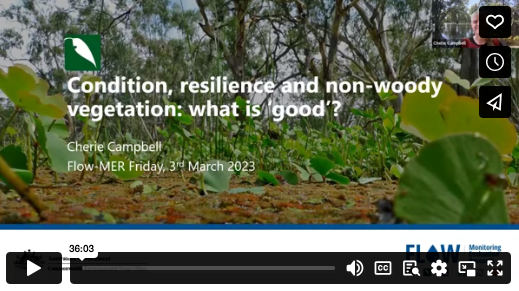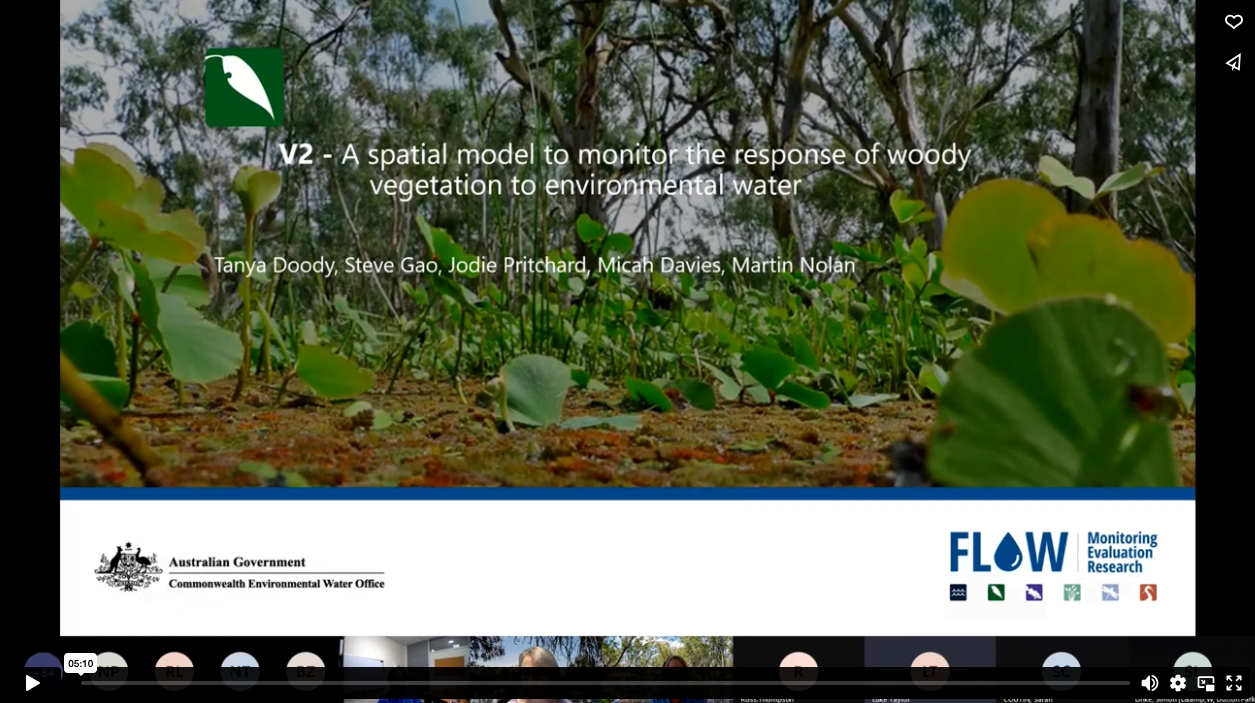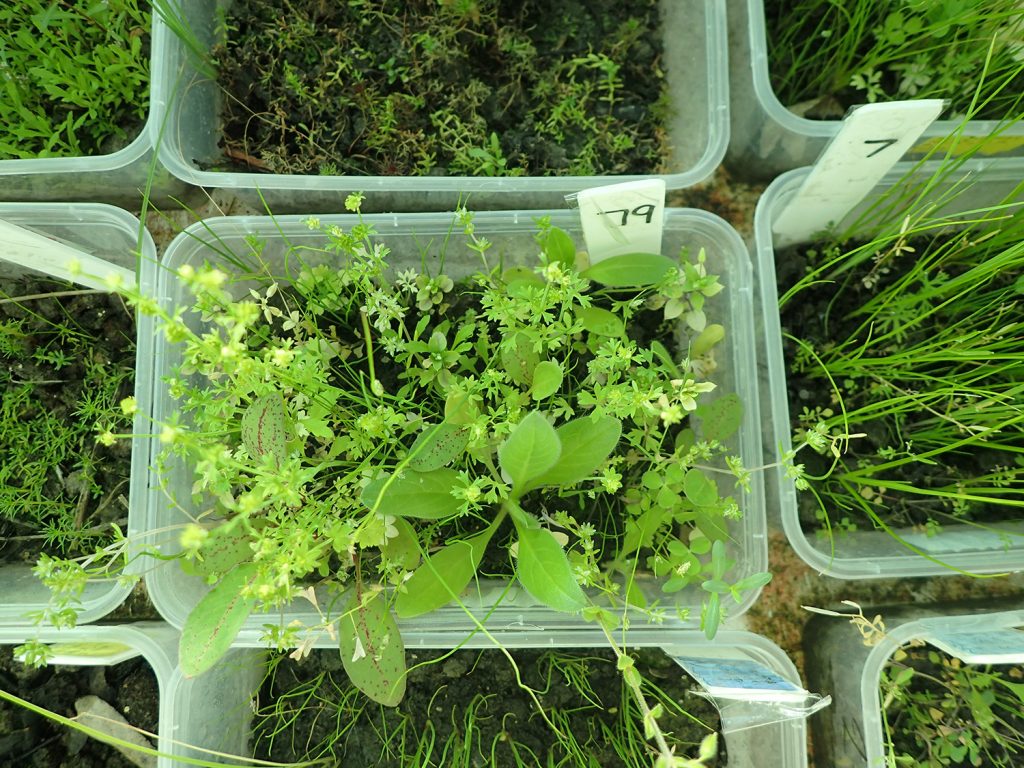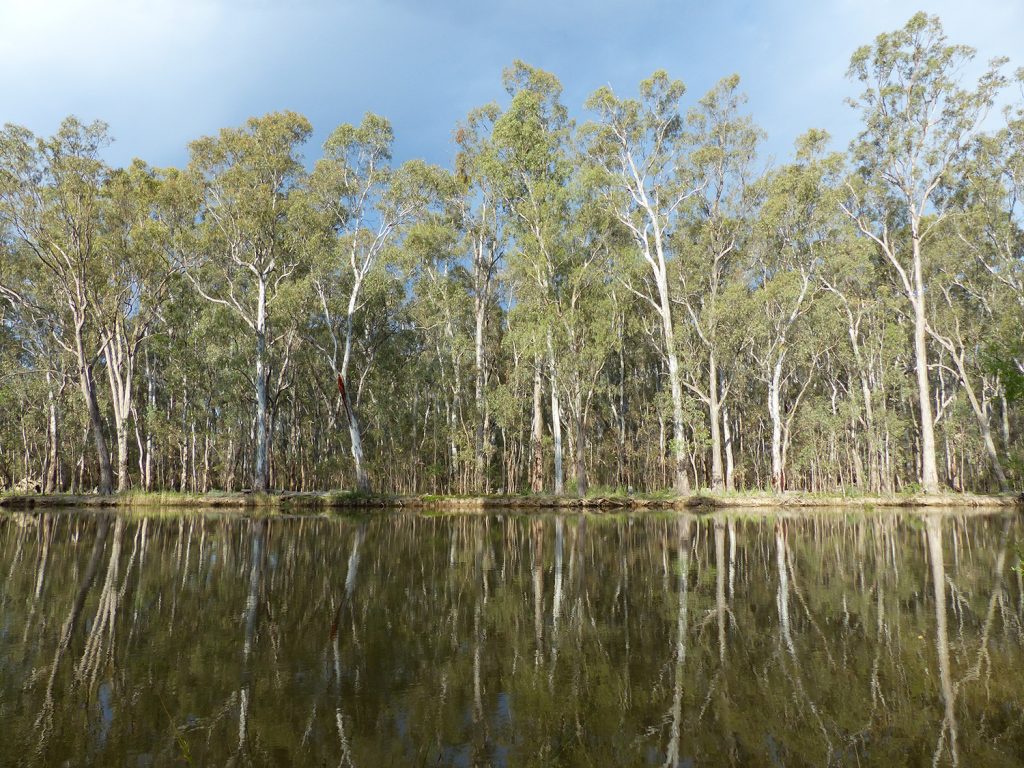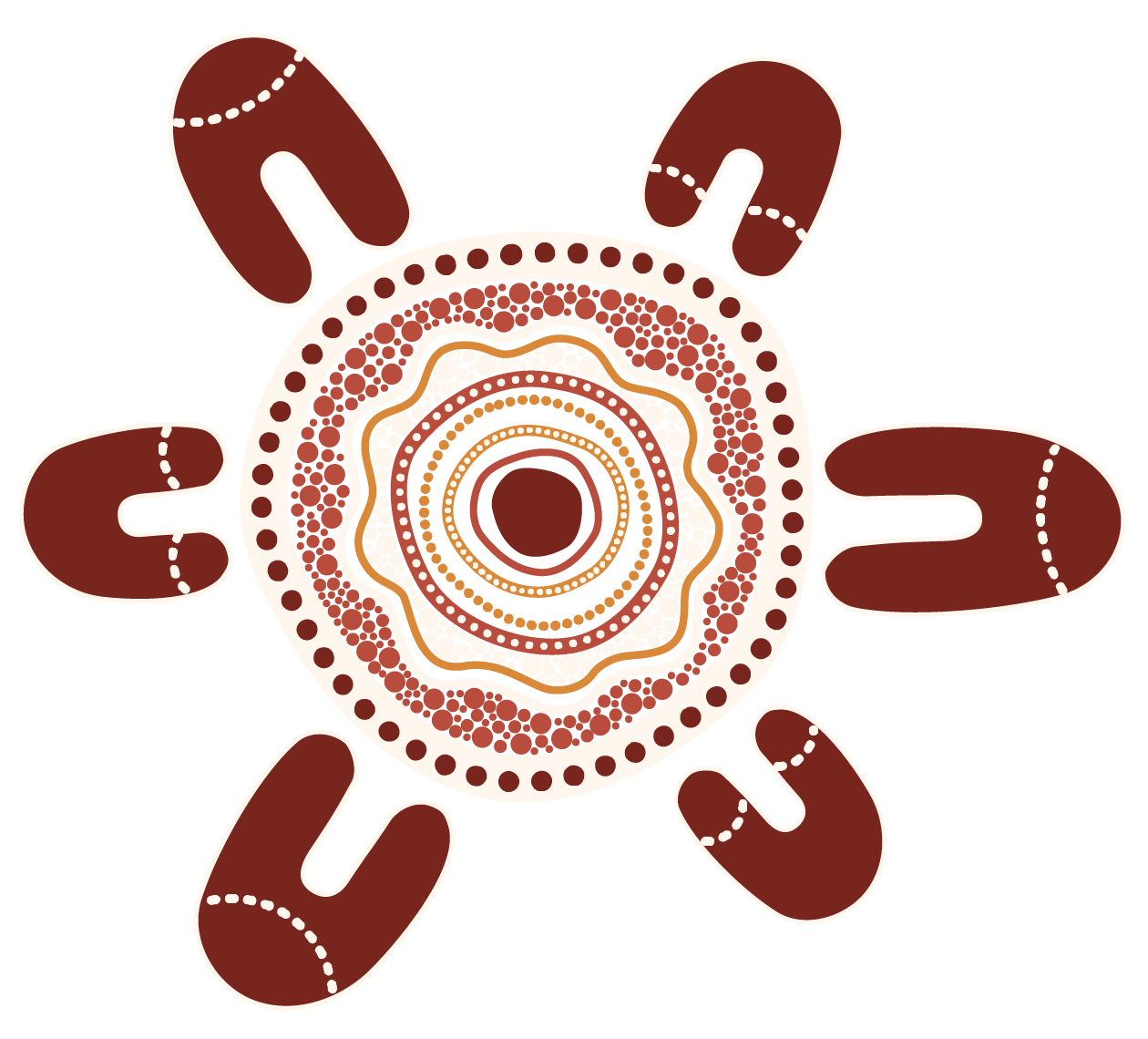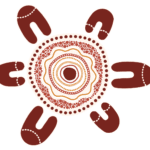Flows for vegetation
Environmental water is used across the basin to support trees, shrubs and groundcover vegetation with water used to enable particular groups of vegetation to grow and reproduce. Over the past eight years we have been monitoring and evaluating the outcomes of using environmental water to support the diversity of groundcover vegetation. Professor Fiona Dyer talks about three key findings from their work in the accompanying video. In brief:
- There are a lot of unique and diverse vegetation species in the Basin with 779 taxa recorded and in 2021-22, 45 species identified which had not previously been recorded.
- There are three distinct groups of vegetation that respond to different inundation patterns with implications for water managers (see below).
- First Nations peoples have shared the cultural significance of particular plants, and this presents new opportunities for collaboration.
The contents below are a synthesis of the Flow-MER Vegetation Basin Theme report, available at: 2021-22 Basin-scale evaluation of Commonwealth environmental water – reports and supporting documents – DCCEEW
Stunning mix of submerged, amphibious and terrestrial vegetation at Whealbah, on the Lachlan River in NSW. Photo: Fiona Dyer
Our Approach
We use field records of vegetation species and inundation data that are collected by the Selected Area Teams to build our understanding of the relationship between environmental water and vegetation species and communities. The vegetation monitoring data are used to describe the groups of plants (assemblages) that are associated with places that have experienced similar inundation regimes over the past 8 years – these are known as hydrological groups. We use these associations to compare what vegetation will exist with and without environmental water. We also single out plants that are important because they are rare or threatened, or those that we know have been used by First Nations peoples.
What have we learned?
There are a lot of plant species across the basin, and our Selected Area teams are still finding previously unrecorded species each year! Through our work we have observed three distinct groups of floodplain and wetland sites on the basis of their hydrology, referred to as hydrological groups. When you look through the groups, you will see that they are made up of sites from particular Australian National Aquatic Ecosystem types, with the number of sample points also provided.
Click on the groups to learn more:
Group 1: Near permanent water
- permanent wetland (3)
- permanent tall emergent marsh (1),
- permanent lowland stream (1) (all not occurring in any other groups)
- river red gum forest riparian zone or floodplain (3)
- temporary river red gum swamp (4)
Group 2: Inundated annually or nearly annually for approx. 6 months
- freshwater meadow (9) (not occurring in any other groups),
- coolibah woodland and forest riparian zone or floodplain (7)
- river cooba woodland riparian zone or floodplain (2)
Group 3: Inundated every 2 years for 9 months
- river red gum forest riparian zone or floodplain (12)
- black box woodland riparian zone or floodplain (8),
- temporary lake (5),
- temporary sedge/grass/forb marsh (3),
- permanent lake (1)
- shrubland riparian zone or floodplain (1).
- coolibah woodland and forest riparian zone or floodplain (3),
- temporary river red gum swamp (3),
- lignum shrubland riparian zone or floodplain (1)
- clay pan (1)
Each of the three groups has a distinct vegetation community associated with it.
- Groups 1 and 2 have a greater cover of submerged and amphibious species than Group 3. This reflects the wetter conditions that prevail at these locations.
- Group 3 has far more terrestrial and woody flood dependent vegetation reflecting the more intermittent flooding of these locations.
We wanted to know more about how these vegetation groups responded to water for the environment. Figures 1 and 2 below display clustering of all Flow-MER vegetation sample points into the three hydrological groups based on observed inundation regime. The larger symbol represents the centroid of each cluster. The stark difference between the with and without environmental water is a key finding from our work over the past 8 years.
The figures below display clustering of all Flow-MER vegetation sample points into 3 hydrological groups based on observed inundation regime. Key: Group 1 = near permanent water, Group 2 = inundated annually or nearly annually for approx. 6 months, Group 3 = inundated every 2 years for 9 months. The larger symbol represents the centroid of each cluster.
With environmental water:
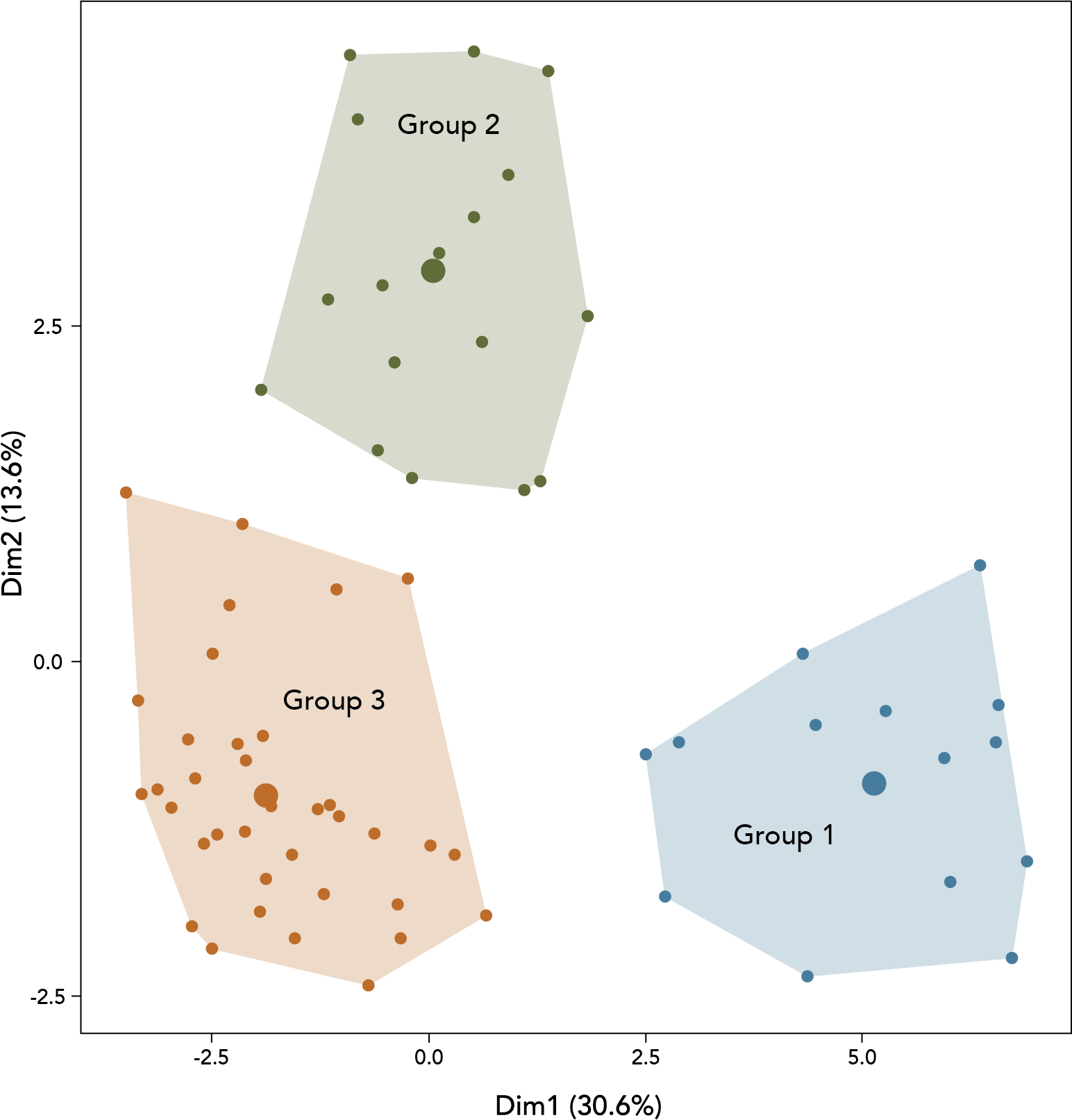

Without environmental water:
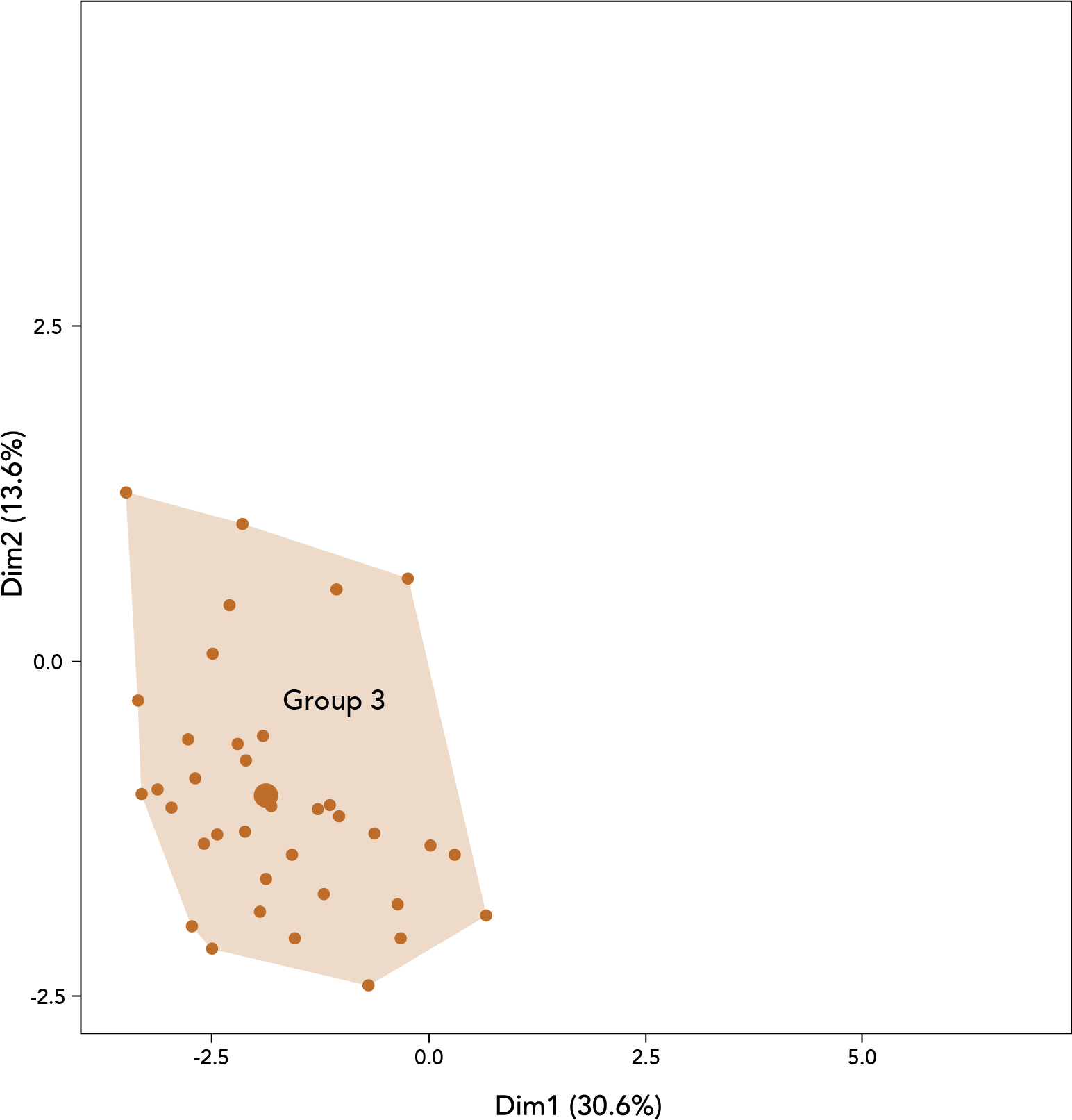

Adding water for the environment boosts vegetation diversity
Importantly, 16 water-dependent taxa from the submerged, amphibious and damp functional groups are only found in the wettest of the sample points (Group 1) and 25 are only found at Group 2 sample points. These include the submerged species eel weed (Vallisneria australis) and ribbon weed (V. gigantea) that are unique to Group 1 sample points, and narrow-leaved cumbungi (Typha domingensis) that is unique to Group 2 sample points, as well as a range of amphibious and damp-loving taxa.
When we model the inundation regime that would occur without environmental water, we would not have any sites that have an inundation regime that matches either Group 1 or Group 2 and we would just be left with sites that fit within Group 3.
Our modelling suggests that in the absence of environmental water we would have considerably less cover of submerged and amphibious species across the managed floodplain of the Murray–Darling Basin. This would mean a significant reduction in the diversity of vegetation species and communities.
Functional group composition
Submerged
Species that either require permanent water in the root zone or those that live in the water column.
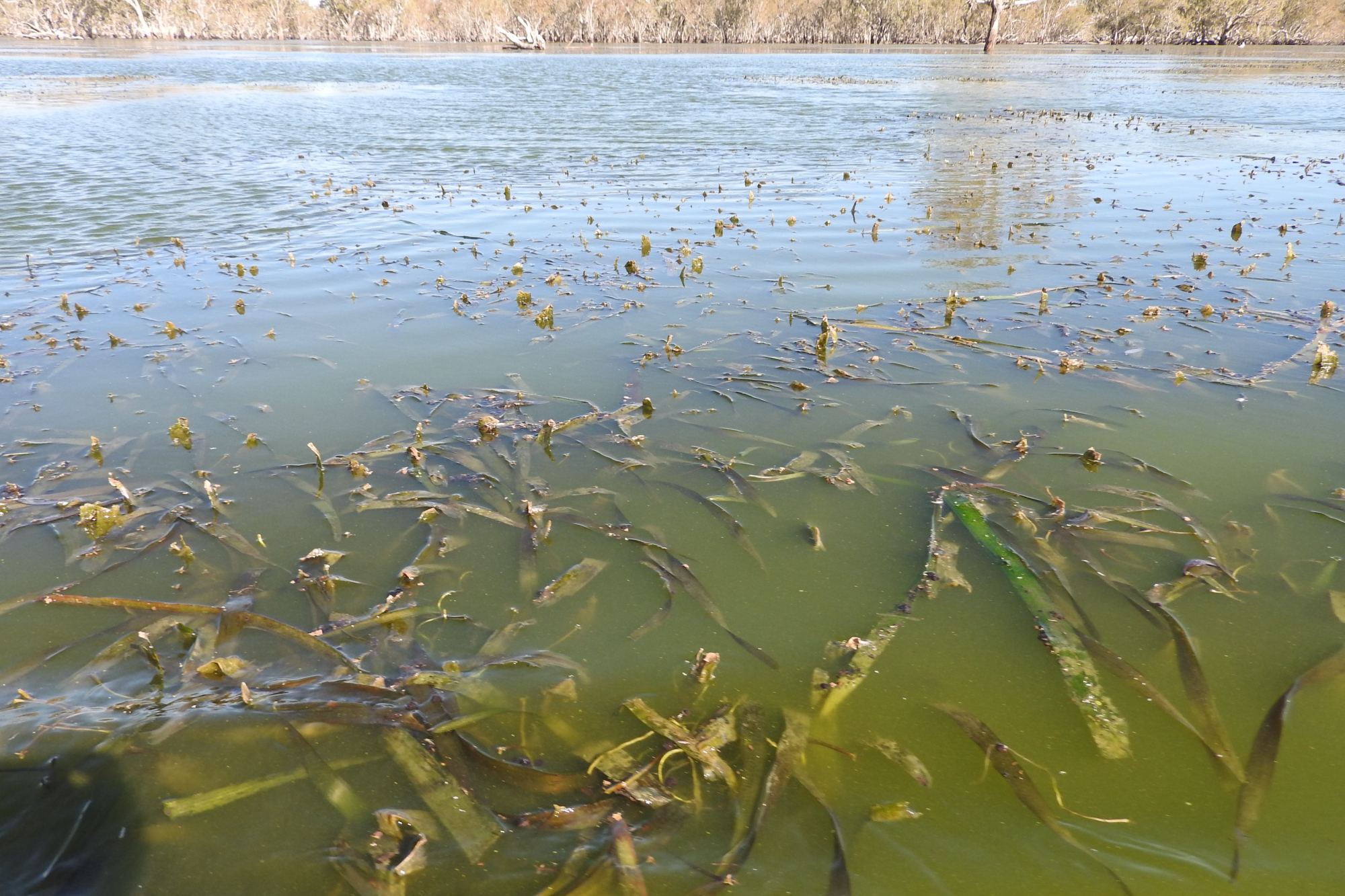
Eel weed (Vallisneria australis)
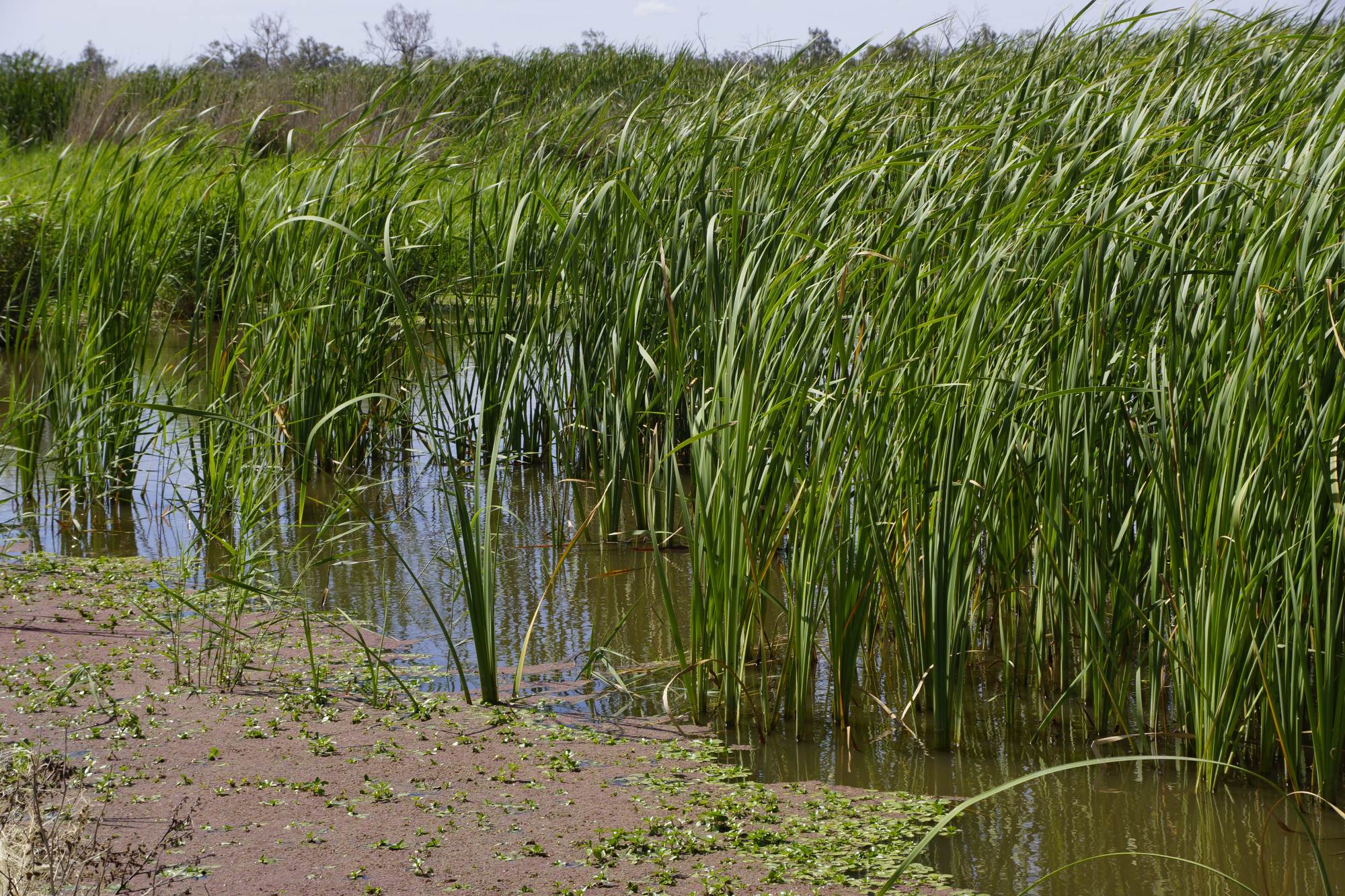
Cumbungi (Typha domingensis)
Amphibious
Species that either respond to, or tolerate, the presence of surface water. These species usually require flooding for more than 3 months per year, but can survive periods of damp and drying ground.
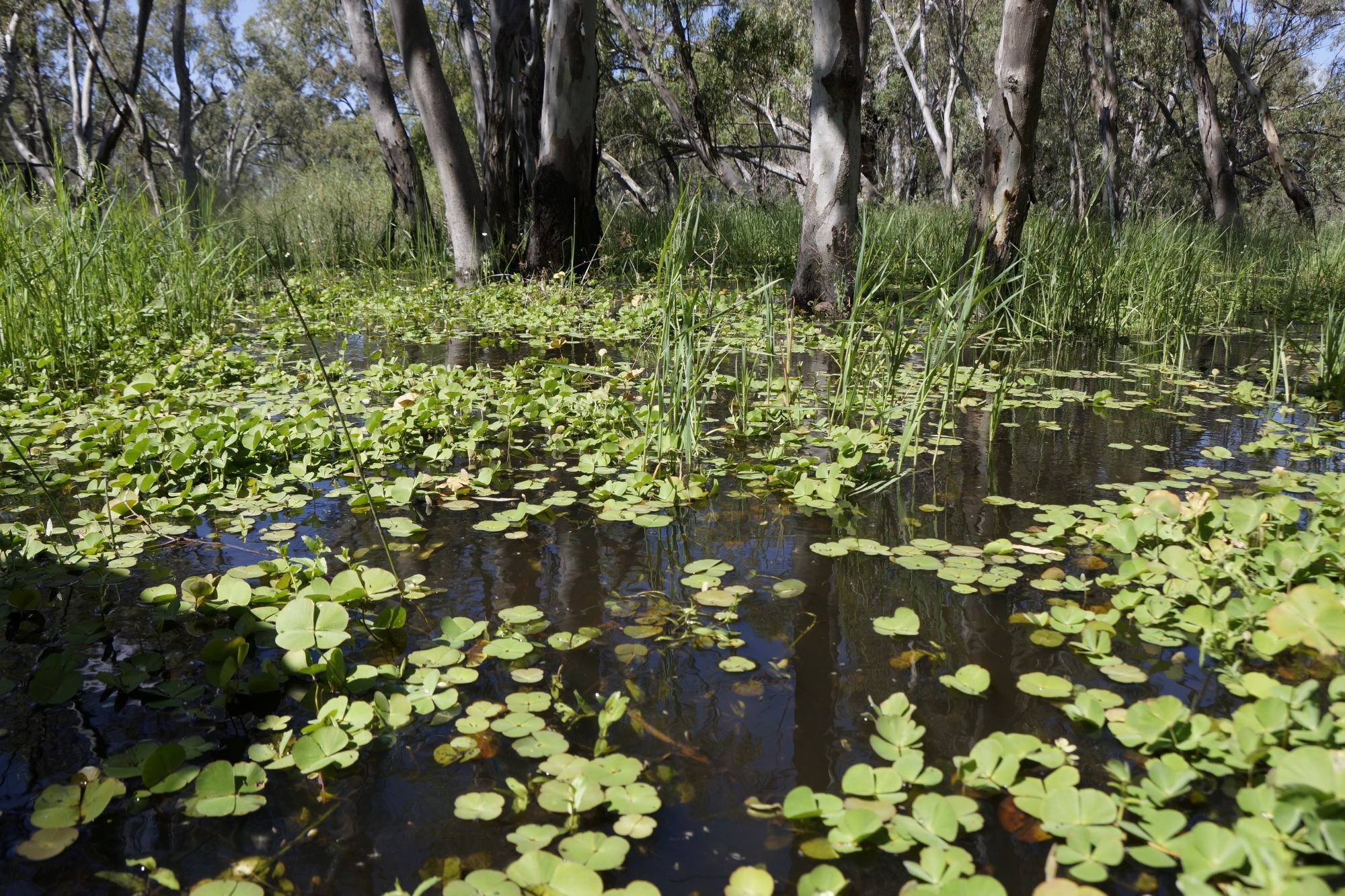
Nardoo (Marsilea drummondii)

Buttercup (Ranunculus undosus)
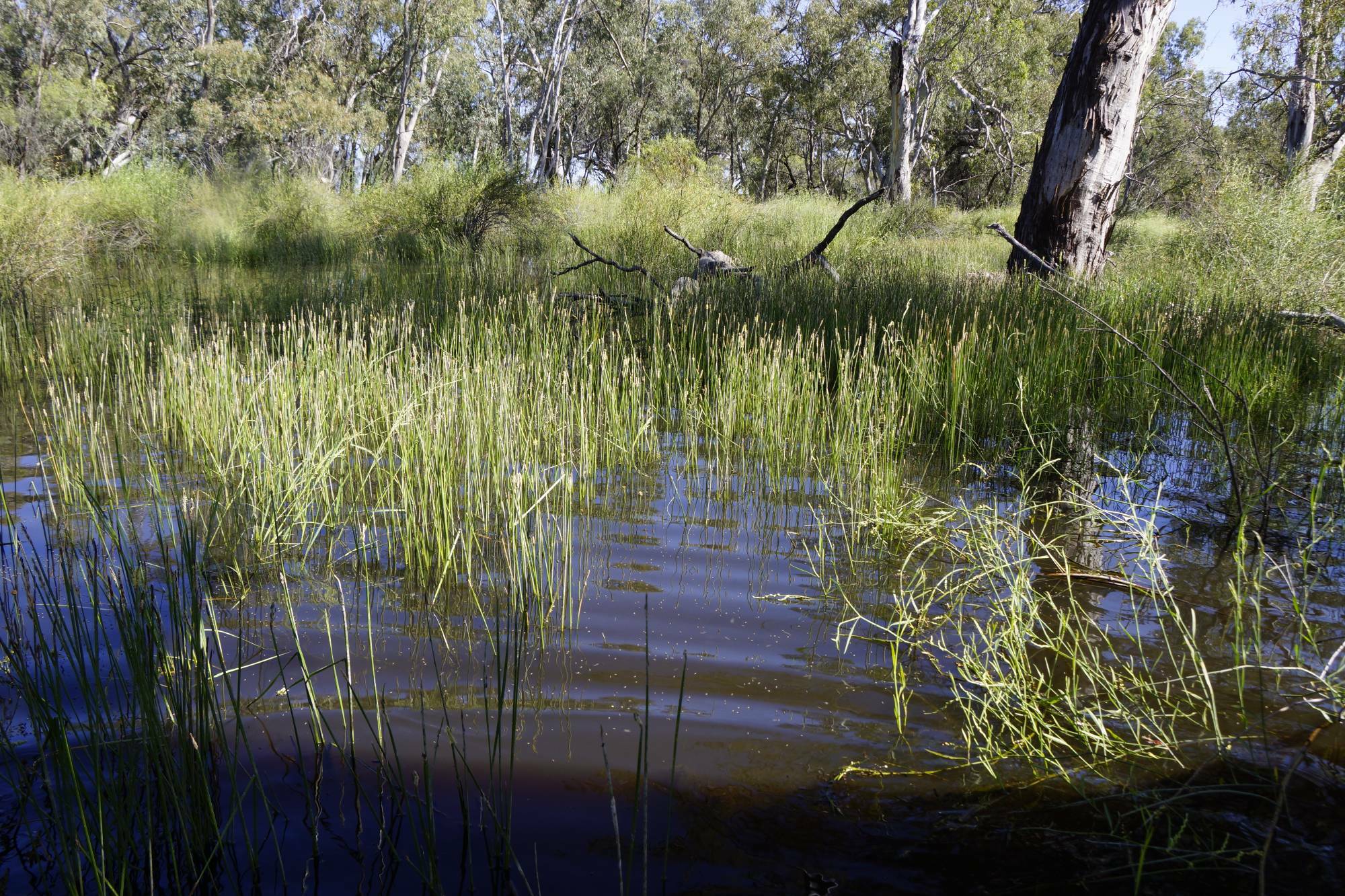
Commmon spike rush (Eleocharis acuta)
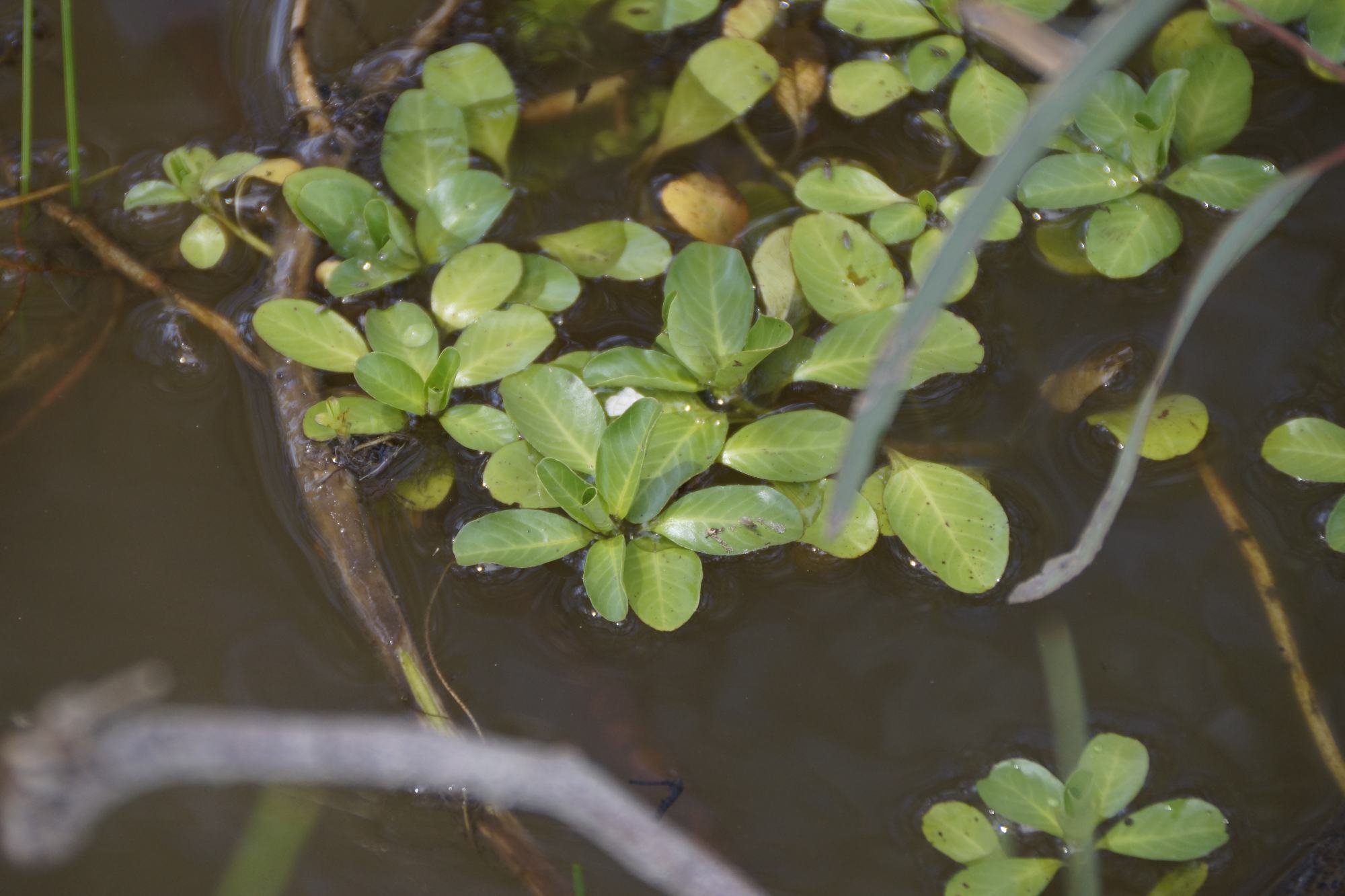
Floating primrosle-willow (Ludwigia peploides)
Damp
Species that germinate and establish on saturated or damp ground, but the adult plants don’t tolerate flooding. They grow on ground that has been flooded.

Australian mint (Mentha australis)
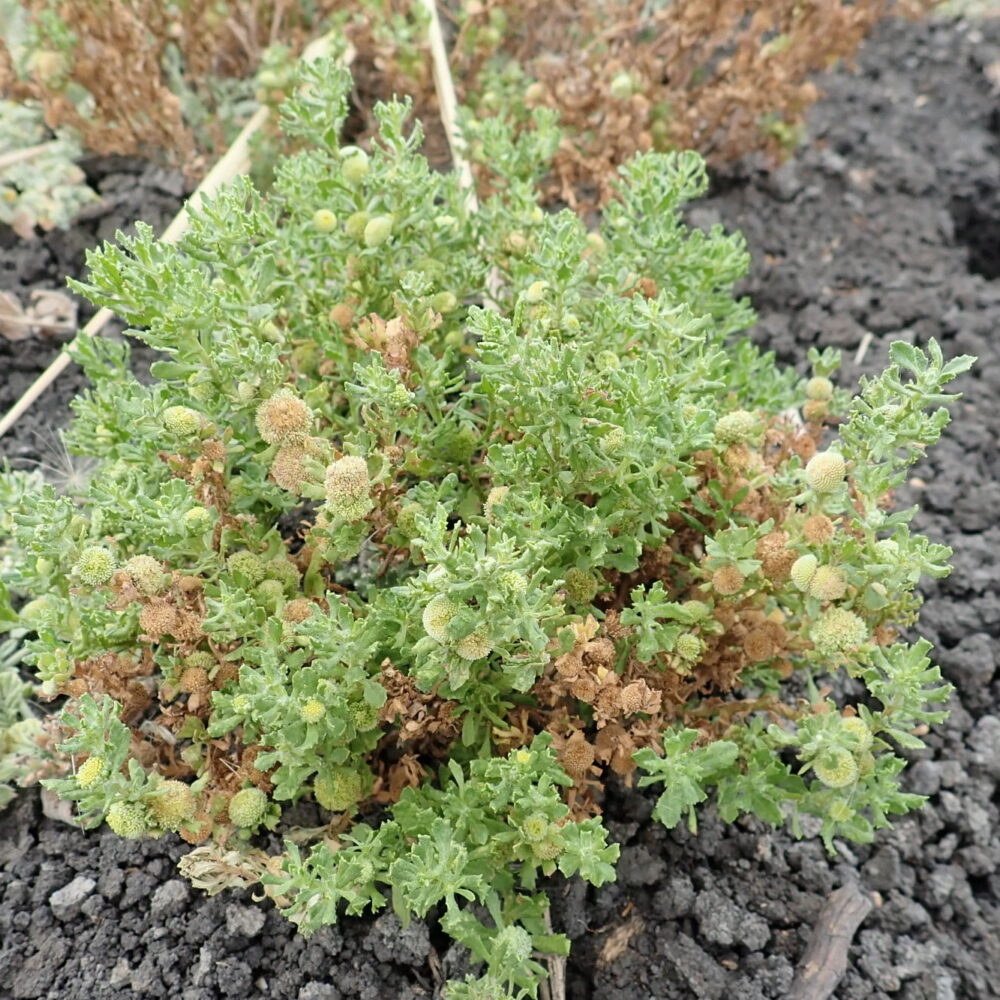
Sneeze weed (Centipeda cunninghammi)
Woody Flood Dependent
Perennial trees or large shrubs that require flooding to complete part of their life cycle.

Lignum (Duma florulenta)
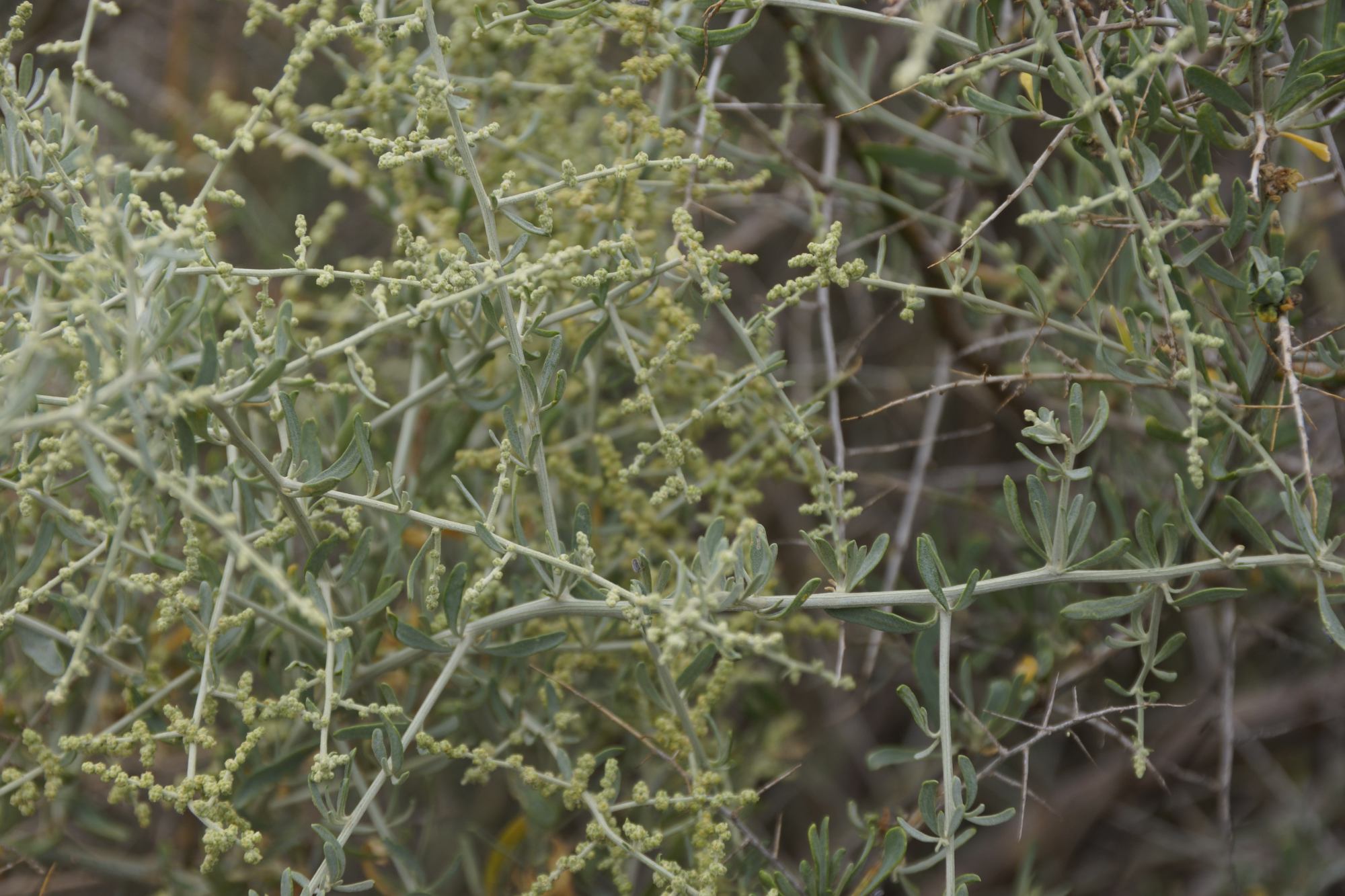
Nitre goosefoot (Chenopodium nitrareaceum)
Terrestrial
Species with no flooding requirement.
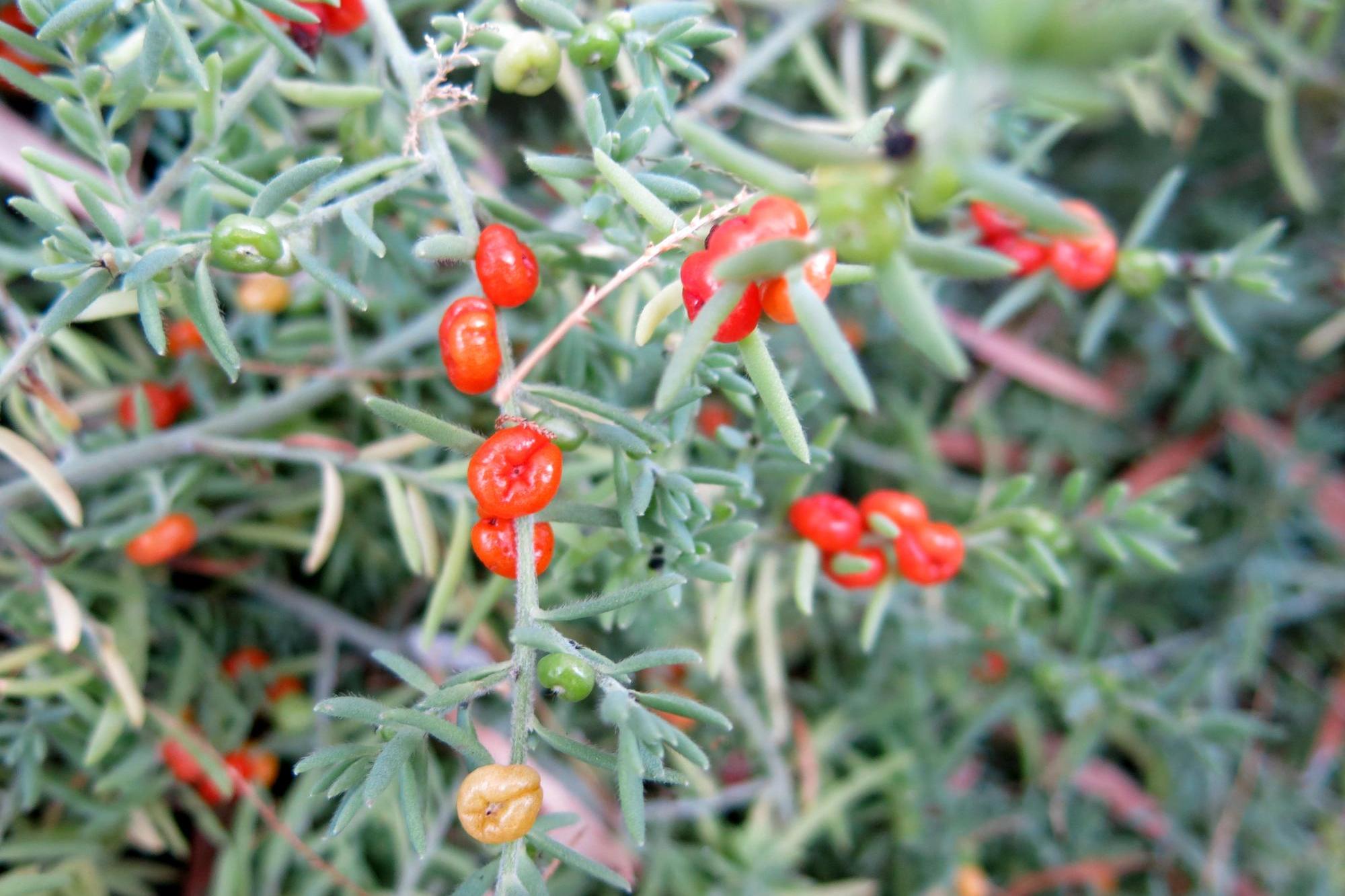
Ruby saltbush (Enchylaena tomentosa)

Bladder saltbush (Atriplex vesicaria)
Noonamah sampling during wet conditions in November 2020. Photo credit: Angus Macdonald and Will Higgisson.
Volume of Commonwealth water for the environment delivered to Murray-Darling Basin regions (2021-22)
Commonwealth water for the environment is used to support vegetation in different regions across the Murray-Darling Basin. Click on different regions on the map to learn how the water was used, and the vegetation outcomes it was designed to achieve.
Total Commonwealth environmental water delivered with vegetation outcomes expected
of 2,786 GL delivered program-wide
Commonwealth environmental water watering actions with vegetation outcomes expected
of 160 watering actions program-wide
Please Note: For the purpose of the Flow-MER Program, Lock 1 to 9 are included as part of the Lower Murray Region and Lock 10 to 15 are included as part of the Central Murray region.
Legend
![]() Selected Area
Selected Area
Vegetation Outcomes
![]() Vegetation condition
Vegetation condition
![]() Vegetation extent
Vegetation extent
![]() Regeneration
Regeneration
![]() Seed germination
Seed germination
![]() Health of in-stream habitat
Health of in-stream habitat
![]() Improve bird habitat
Improve bird habitat
![]() Prevent vegetation loss
Prevent vegetation loss
![]() Reduce soil salinity
Reduce soil salinity
![]() Restoration and/or recovery
Restoration and/or recovery
![]() Inundate habitat
Inundate habitat
![]() Resilience
Resilience
![]() Soil stabilisation
Soil stabilisation
Watering Actions
![]() Baseflows
Baseflows
![]() Freshes
Freshes
![]() Bankfull
Bankfull
![]() Overbank
Overbank
![]() Wetland watering
Wetland watering
Understanding vegetation outcomes
Water for the environment is used for a range of expected outcomes for vegetation. Learn more about these outcomes below, and use the dashboard above to see which vegetation outcomes were a focus for water use across the Murray-Darling Basin in 2021-22.
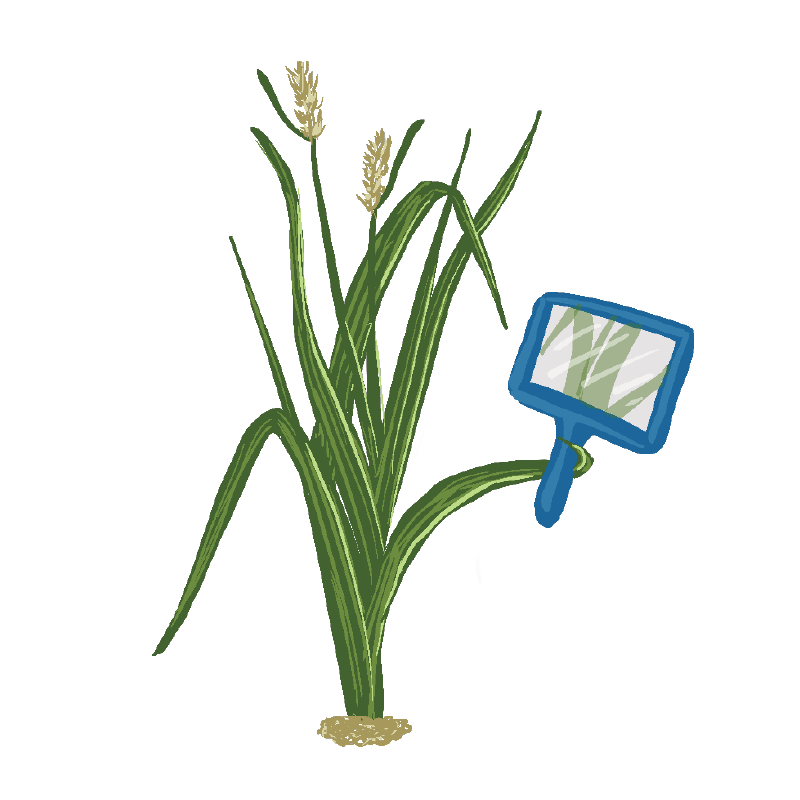
Vegetation condition
Condition is a broad term to describe the overall health or quality of vegetation. Our research studies whether condition is declining, stable or improving.

Vegetation extent
Extent is the area that vegetation are known to occupy. Our research studies whether vegetation extent is declining, stable, or increasing.
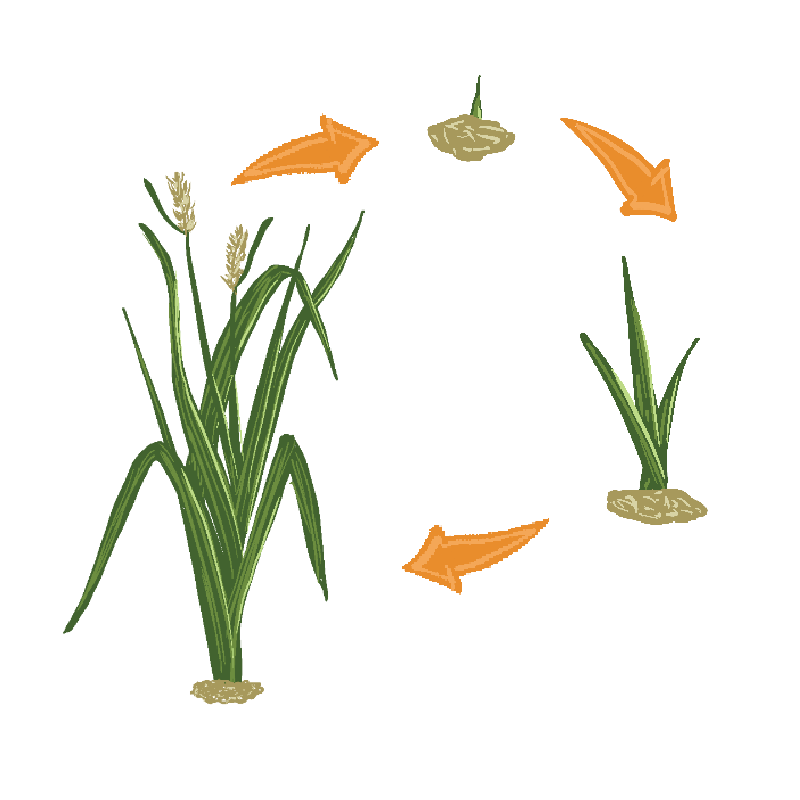
Regeneration
Natural regeneration is the natural regrowth of existing vegetation to replace plants which have died. We study how water for the environment can assist this process.
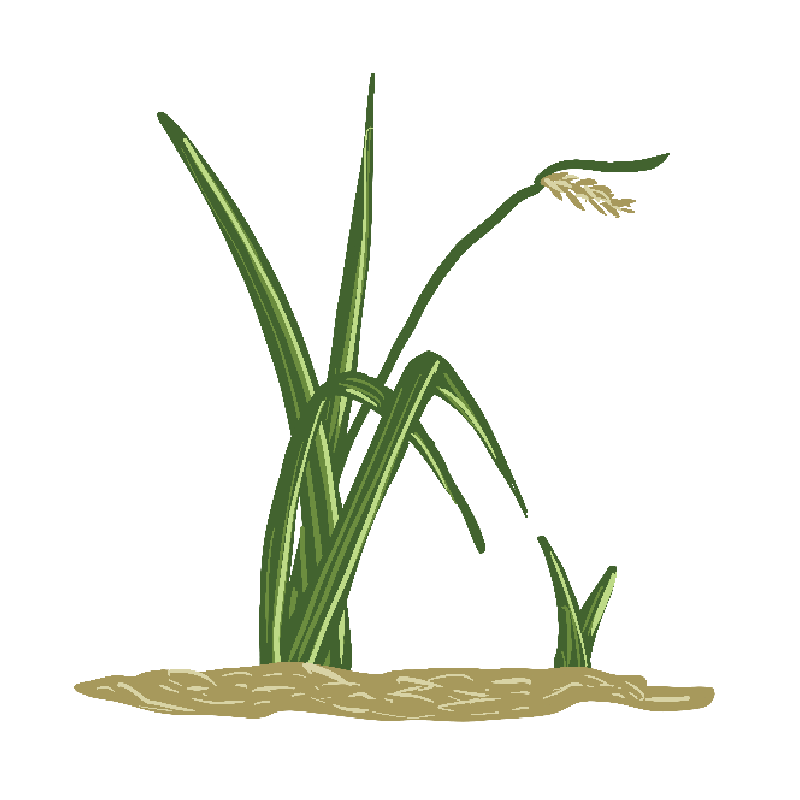
Seed germination
Germination is the process by which a plant grows from a seed into a seedling. Seeds tend to remain dormant until conditions are favourable for germination.

Health of in-stream habitat
In-stream habitat describes aquatic vegetation, as well other components like wood and rock that maintain the health of a waterway.

Reduce soil salinity
Saline soils are those that contains enough soluble salt to adversely affect the growth of plants and prevent them from regenerating.

Prevent loss of vegetation
We examine how water for the environment can prevent the death and/or decreasing condition of vegetation.

Soil stabilisation
The roots of vegetation maintain plant root mass, which helps to limit erosion, improve soil stability and contributes to soil fertility.
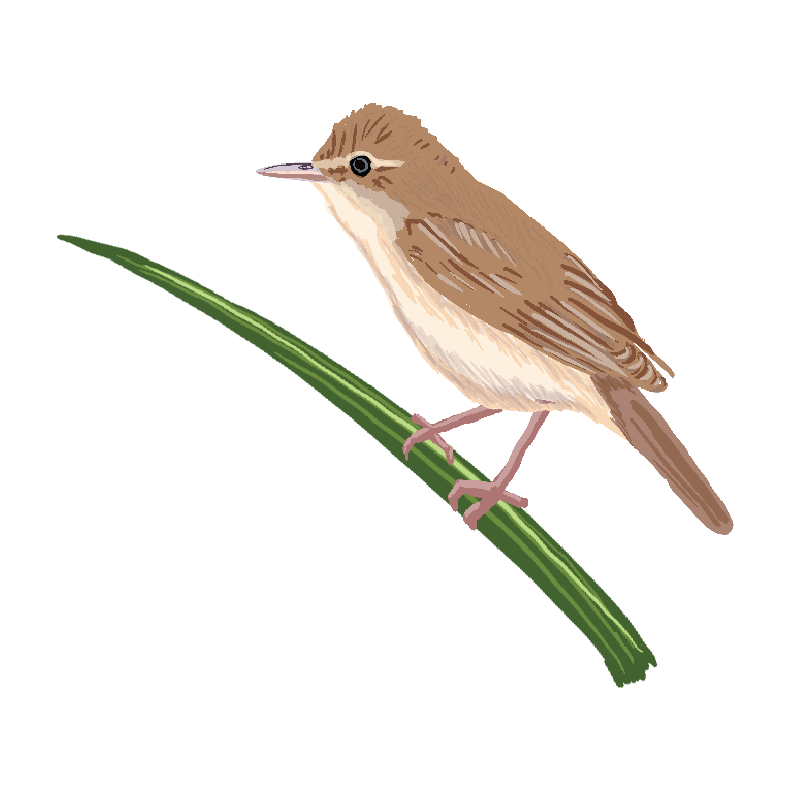
Improve bird habitat
Our work identifies specific plant species that provide adequate cover and protection for bird nests and help provide a food source.
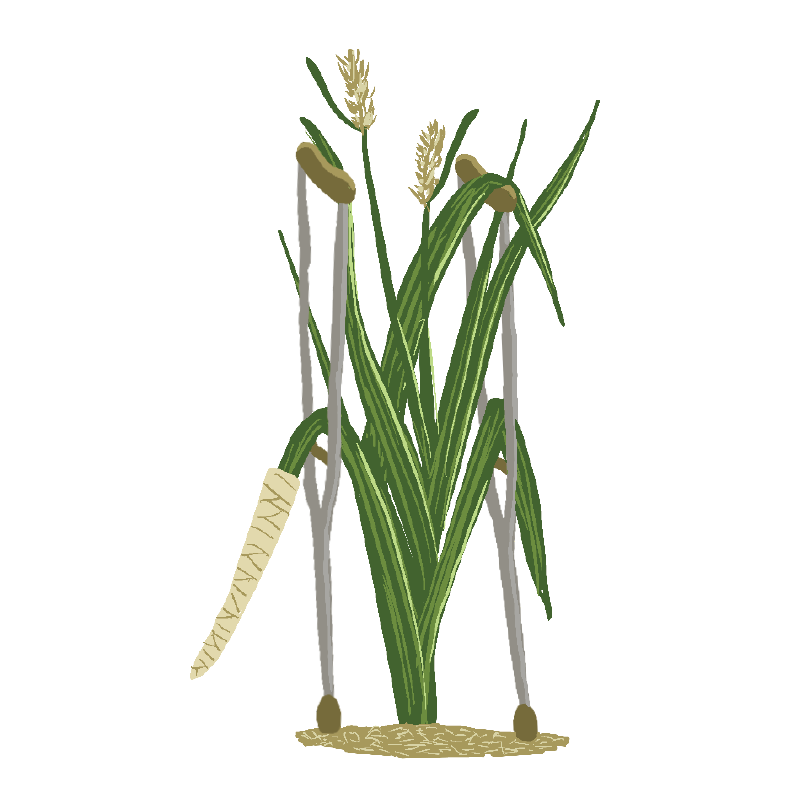
Restoration and/or recovery
Restoration and recovery include improving the health of existing vegetation.

Resilience
Resilience describes the ability for vegetation to recover after a decline.

Inundate habitat
Inundate habitat refers to the delivery of enough environmental flows to inundate instream and/or riparian habitat.
Aquatic vegetation in the Wakool River in summer 2015 after four consecutive years of environmental watering. Photo credit: Robyn Watts, Charles Sturt University.
What does this mean for water managers?
Water for the environment should continue to be managed to maintain wetter hydrological regimes in floodplain–wetland habitats and the diversity of vegetation they support.
Environmental water has played an important role over 8 years in maintaining functionally important assemblages of species and richness of vegetation communities:
1
It increases vegetation species and community diversity.
Environmental water was delivered to align with water frequencies needed by vegetation groups, contributing to increased vegetation species and community diversity over 8 years.
2
It helps prevent shifts to ecosystem types that prefer drier hydrological regimes.
Without environmental water, ecosystem types – like permanent lowland rivers, freshwater meadows, permanent tall marsh, and palustrine wetlands* – would be reduced in extent and are likely to shift to different ecosystem types associated with drier hydrological regimes. Environmental water is important for maintaining a diversity of hydrological regimes across the managed floodplain that in turn support distinct functional and structural assemblages of vegetation.
*Palustrine wetlands are what many people traditionally think of as a wetland—they are vegetated, non-riverine or non-channel systems. They include billabongs, swamps, bogs, springs, soaks etc. and have more than 30% emergent vegetation. They are an important part of the landscape and provide habitat and breeding areas for a wide variety of species.
3
It increases the resilience of water-dependent vegetation communities.
Environmental water has contributed to longer term resilience of water-dependent plant communities in maintaining the distinct hydrological regimes needed by vegetation communities. For example, without environmental water, drier hydrological regimes would reduce the diversity and cover of submerged, amphibious and damp-loving species which over time, will reduce seedbanks of these water-dependent species, limiting their capacity to recover in the future.
4
It influences the response of vegetation communities.
Data collected over 8 years show vegetation communities have distinct functional and community assemblages because of the hydrological regime they experienced – demonstrating a strong response from vegetation to environmental water received.
Meeting Basin plan objectives
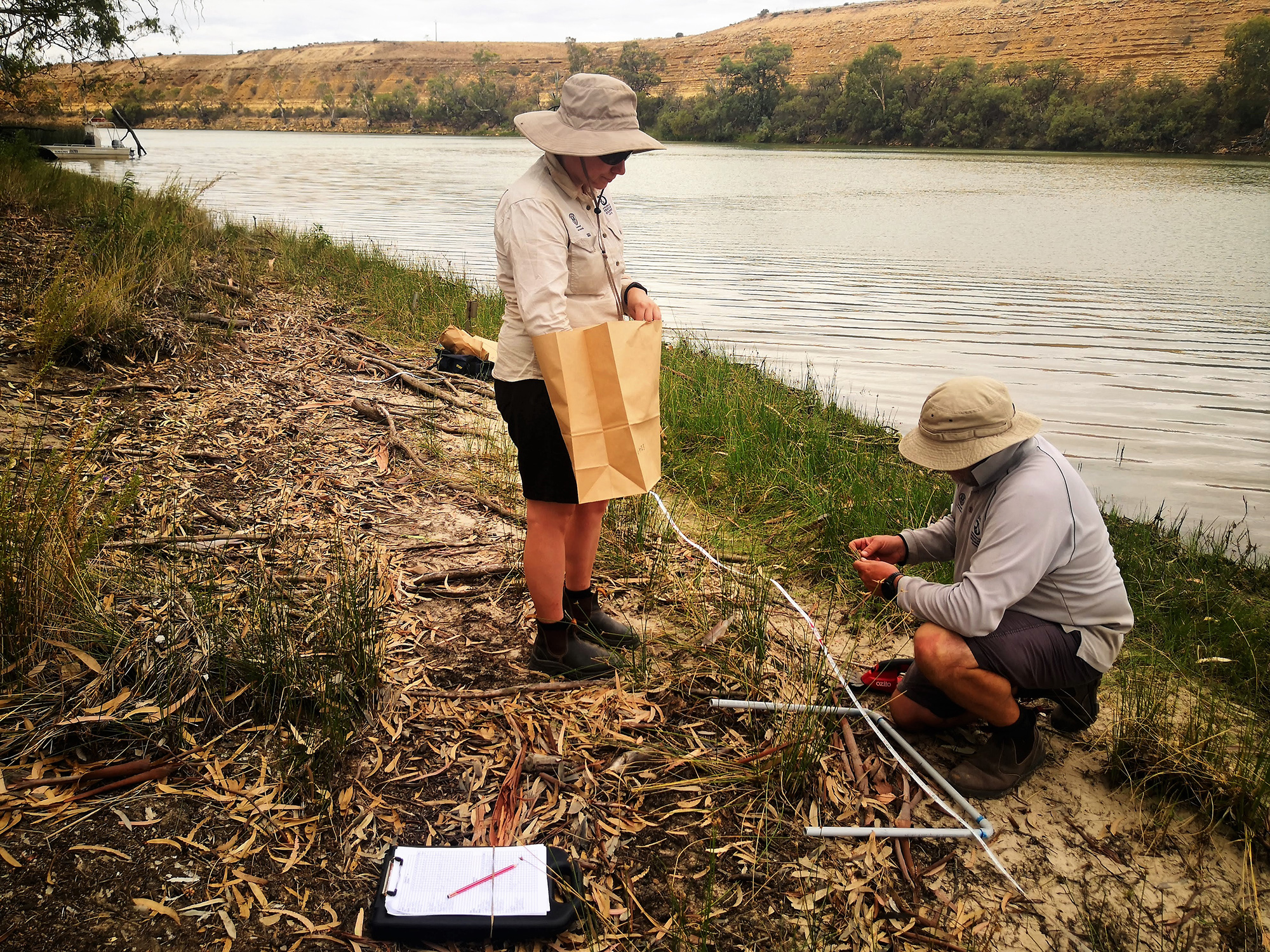
What did Commonwealth environmental water contribute to plant species diversity?
The delivery of Commonwealth water for the environment has played an important role in maintaining a substantial number of native plant species across the Basin.
What did Commonwealth environmental water contribute to vegetation community diversity?
Between 2014-22, there have been significant differences in the functional and structural assemblages of vegetation between sites that received environmental water and those that did not.
In the absence of Commonwealth water for the environment, many locations across the Basin would have experienced notably drier water regimes, resulting in substantially less diversity and cover of water-dependent species.
There is an opportunity to use water for the environment, in collaboration with First Nations people, to support plants of cultural significance.
While Commonwealth environmental watering actions over the past eight years have not deliberately targeted plant species because of their cultural significance, watering actions that supported groundcover vegetation have concomitantly supported a range of plant species known to be used by First Nations people.
Fifty-six species that are known to be used by First Nations people were recorded at sample points that received environmental water in 2021-22, 23 of which were unique to sample points that received environmental water. Seven of these species are submerged and amphibious plants that are associated with Hydrology Groups 1 and 2.
There is an opportunity to engage with First Nations communities across the Basin to identify additional plant species that are culturally important and can be supported with environmental water. This could help establish more specific cultural objectives for vegetation outcomes in the Basin, help inform the design of watering actions and contribute to supporting plant species diversity across the Basin.

Key to plant uses: Fo = food; M = medicine; Fi = fibre and shelter (including dye, glue and resin); C = ceremonial or dreaming/story-telling; H = hunting or fishing; B = basket weaving.
| Latin name | Common name | Use |
|---|---|---|
| Submerged | ||
| Phragmites australis | Common reed | Fo, Fi, C, H |
| Typha domingensis | Narrow-leaved cumbungi | Fo, Fi, C |
| Amphibious | ||
| Carex appressa | Tall sedge | Fi |
| Carex tereticaulis | Basket rush | C |
| Cycnogeton procerum | Water ribbons | Fo |
| Juncus usitatus | Common rush | Fi |
| Nymphoides crenata | Wavy marshwort | Fo |
| Woody flood dependent | ||
| Acacia dealbata | Silver wattle | Fo, M, Fi |
| Callistemon sieberi | River bottlebrush | Fo |
| Terrestrial | ||
| Chenopodium | Goosefoot | Fo |
| Chenopodium curvispicatum | Cottony saltbush | Fo, M |
| Chloris truncata | Windmill grass | Fo |
| Eucalyptus populnea | Bimble box | Fi |
| Glycine clandestina | Twining glycine | Fo |
| Goodenia | Goodenia | M |
| Hypochaeris glabra | Smooth cats’ ear | Fo |
| Melaleuca lanceolata | Moonah | M, C |
| Nicotiana suaveolens | Native tobacco | M |
| Panicum decompositum | Native millet | Fo |
| Themeda triandra | Kangaroo grass | Fi |
| Variable | ||
| Cardamine | Bitter cress | Fo |
| Eleocharis | Spike-rush | Fo, Fi, H, B |
| Rorippa | Marsh cress | Fo |
Recommended adaptive management actions:
Actions related to environmental water
Continue to support vegetation species and community diversity at the Basin scale by delivering environmental water to maintain hydrological regimes at key floodplain–wetland locations.
Actions related to further research
- Consider how to use environmental water to further support plant species known to be used by Aboriginal people.
- Engage Aboriginal communities across the Basin to further identify culturally important plant species that can be supported with environmental water.
- Better understand and evaluate the influence of watering actions on responses from vegetation communities by improving the accuracy of sub-annual inundation data.
- Establish key hydrological metrics to support the evaluation of vegetation outcomes in areas where riverine vegetation is the focus of environmental water management.
Under the surface at Bayil a lignum dominated wetland in Gayini. Photo credit: Skye Wassens.
Knowledge Catalogue
For more information on how water for the environment is being used to support vegetation, please explore the webinars and articles below. The full Flow-MER Vegetation Theme reports are also available.
Photo Gallery
Please credit ‘The Flow-MER Program’ and link back to the Flow-MER website when using any of the photos below.
 Basin Theme: Vegetation
Basin Theme: Vegetation